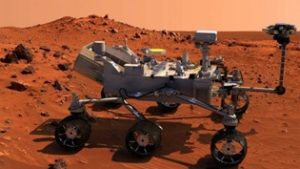The team of China’s first Mars rover, Zhurong, published the results of an analysis of data collected on Utopia Planitia in the journal Nature Geoscience.
It turned out that the soil at the landing site is much stronger than lunar regolith, and also quite sticky. In addition, scientists determined that the terrain in the landing area was formed due to physical and chemical weathering of rocks, including with the participation of water. The morphology of rocks and craters in the Zhuzhong images indicates both physical weathering processes (impact spraying from meteorite impacts, erosion by wind and sand, and weathering from freezing-thawing rocks) and the possible interaction of rocks with water and dissolved salts in it, which led to chemical weathering.
The landing site is located in a lowland, approximately 3.32–3.36 billion years old, which corresponds to the Late Hesparian period.
Zhurong is part of the Tianwen-1 mission, independently prepared by Chinese specialists and including not only the Mars rover, but also the landing and orbital modules. The mission launched in July 2020, and on June 15, 2021, a special module with a rover successfully landed on Utopia Plain.
China has become the second nation in the history of the Earth to not only successfully plant a robot on the planet, but also operate it for a long time. Back in 1971, 50 years ago, a Soviet spacecraft successfully landed, but the equipment failed literally two minutes later. In December 2003, the European Space Agency module supposedly successfully landed on Mars, but no information was received from it.





